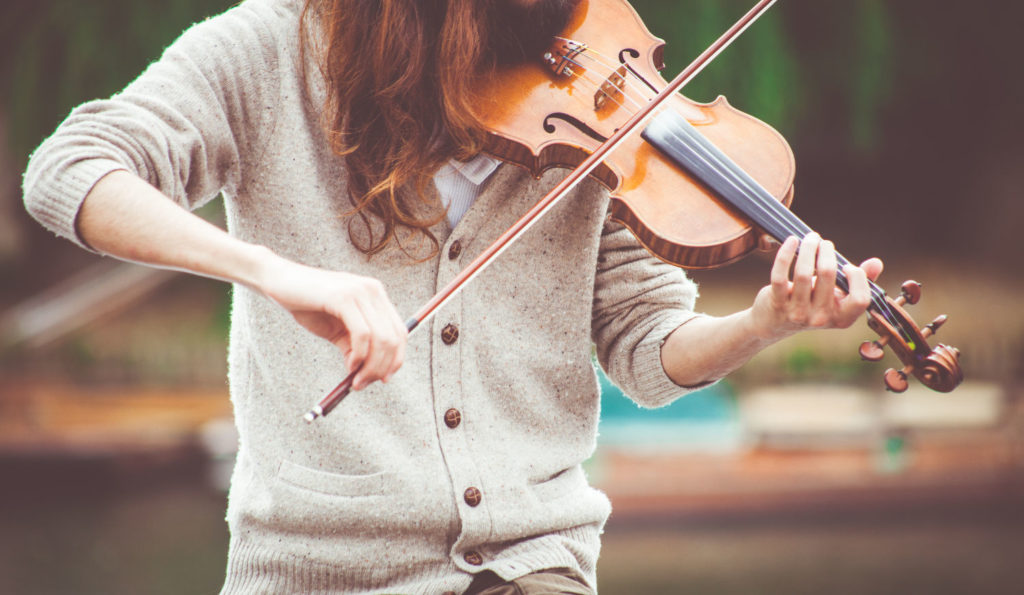Choosing Violin Vs. Piano Based on Learning Difficulty
Authored by Marci Ricklick and Richard J. Chandler, BA, MA
Deciding between learning the violin or piano is a big decision. This article can help you make a better decision, saving you time and energy by choosing the best instrument for you or your child from the start.
An instrument’s level of difficulty to learn is a significant consideration when choosing a musical instrument. The violin is harder to learn than the piano as the player must learn to play in tune with a pleasant sound. With the keyboard, pitch, and fundamental aspects of sound quality, are built-in.
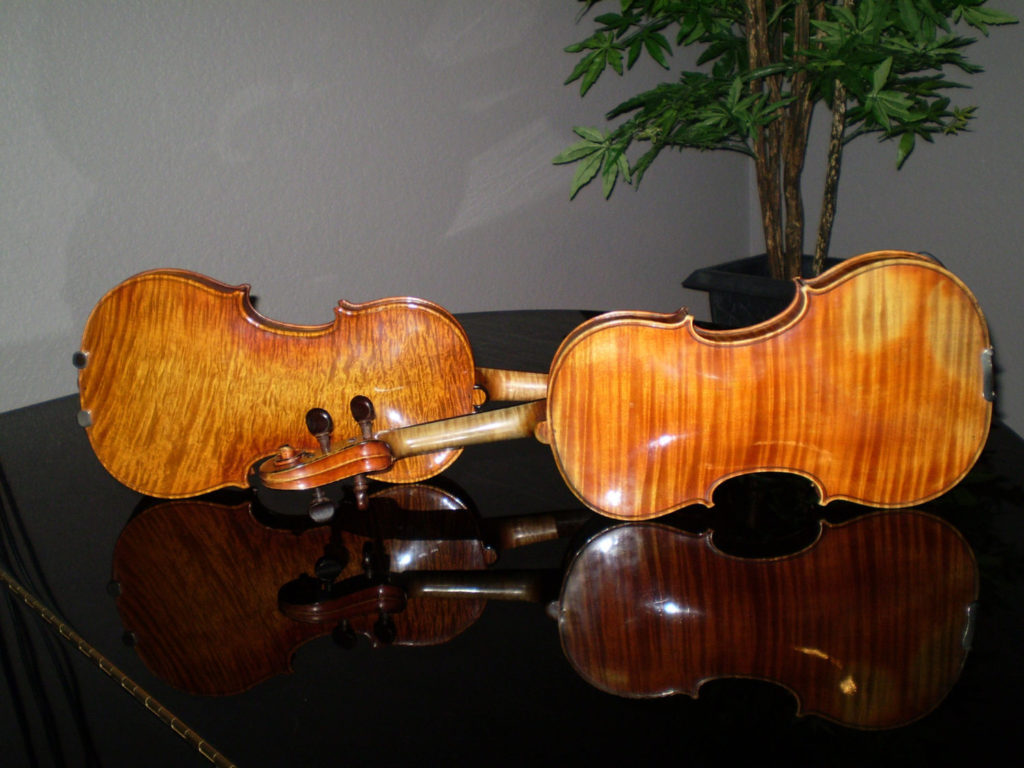
Even though the violin is harder to learn, choosing it may make sense for these reasons:
- You can play it almost anywhere as it is easier to transport
- Ease of transport translates to increased opportunities for making music with other musicians leading to a stronger sense of musical community
- Violin has a singing quality like the human voice
Questions to ask for choosing between the violin and piano:
- Are you a more social person?
- How are you best motivated to learn?
- Would you prefer to play a portable instrument that you can hold in your arms and easily transport?
- Is playing harmony, as well as melody, gratifying for you?
Which Variables are More Challenging for Playing the Piano Vs. Violin?
Note: This chart, developed by the authors on the variables for learning the violin Vs. the piano, may not be used without obtaining permission from LeadingMusicians.com. You may link to it as a source.
| Variables | Piano | Violin |
| Creating Good Sound | Can effortlessly create good sound without having to hear pitch and translate that to playing notes on the instrument. Only need to reach piano keys to create good sound. | Must hear pitch and translate it into notes on the strings of the violin. Needs to be able to use the bow with even pressure to avoid scratchiness. |
| Tuning the Instrument | Acoustic pianos require tuning two times per year after the first year of moving a piano. The first year it is recommended to tune three to four times by a professional piano technician | Violinists tuning their instruments every time they practice. The ability to hear if the violin’s pitch is out of tune is vital for doing this. |
| Hand Size | May be difficult for children to play since the piano is fitted for adults. | No issues for adults or smaller children to use as there are half and three quarter sized violins to accommodate musicians with smaller hands. |
| Transportability | Requires massive effort to transport safely due to a piano’s large weight, size, and delicacy. | Easily carried from lessons to concerts to home weighing 3 lbs – 5 lbs including the case. |
| Teaching Methods | Typical to teach individual lessons. The traditional method involves teaching notes first and later on teaching posture and playing techniques. | The Suzuki Method is highly popular with violinists and emphasizes group lessons, listening to music recordings, and memorization among students. Focus is placed on learning proper technique and posture over reading sheet music. |
| Learning Styles | Visual learners will shine using the traditional learning style of piano since they learn well from written instructions and reading music. | Auditory learners will really excel using the Suzuki style with its tape recording music and instructions likely the most effective. The demonstration in the program assists both the auditory and tactile learners. Games and movement provided in the group lessons will especially help the kinesthetic learners. |
| Comprehending Written Music | Reading music where the pitches of notes vary by the clef and the additional number of notes when playing two staff lines of melody and harmony increases the mental difficulty of the piano | Although the violin can play more than one note at a time by using double, triple, and quadruple stops, the notes are usually melody only with one staff line and one clef. |
Difficulty Differences Between Violin & Piano
The difficulty of creating a pleasing sound in music varies considerably by instrument. Sound production of the string instrument family of violin, viola, cello, and double bass, is especially challenging because there are no keys, as there is for keyboards, woodwinds, or even a fretboard to guide finger placement as there is for the guitar.
A large part of producing a good sound on the violin relies on the capacity to hear a pitch accurately. After accurately hearing the proper pitch in their inner awareness, musicians must know precisely where to place their fingers to transfer their inner sense of pitch onto the strings and fingerboard for the notes to sound in tune.
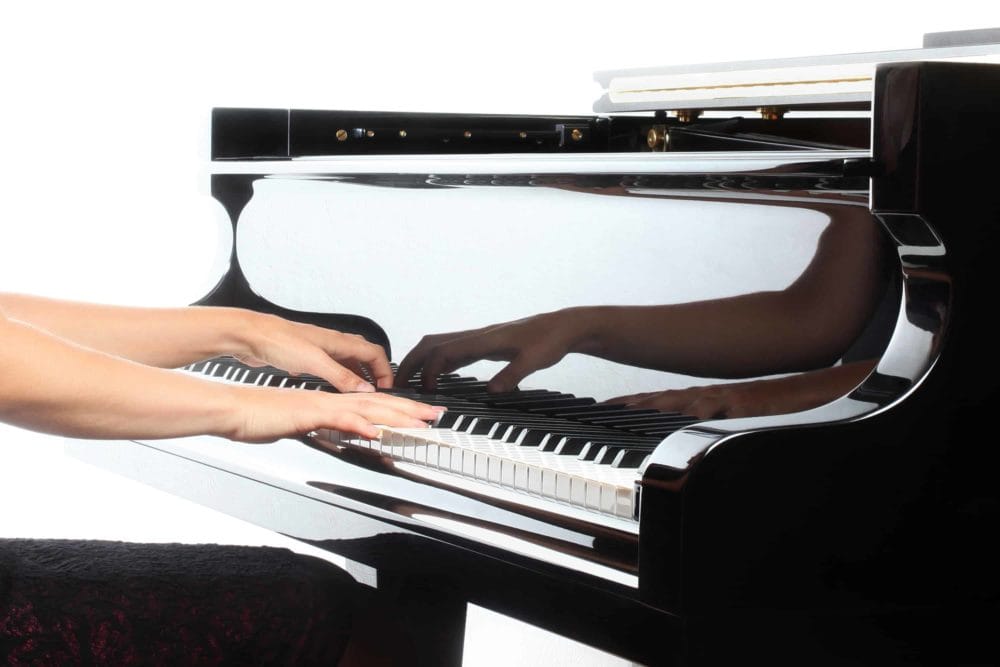
Piano
For piano, creating a beautiful sound is much easier than a violin because fingers hitting the piano keys, even when not ideally placed, will produce a relatively pleasant sound.
With string instruments like the violin, the musicians must hone their ears to discern pitch accurately, then place their fingers in the exact spot on the strings and fingerboard to play in tune. With a piano that is in tune, pianists may place their fingers most anywhere on a key, and the keyboard will respond with a pleasant-sounding and in-tune note.
Professional piano technicians recommend that pianos are tuned three to four times in the first year they are moved to a new location and biannually after that. It typically takes a piano technician from an hour and 15 minutes to two hours to tune a piano. If your tuning session is shorter than an hour, your tuning technician may not be giving your piano a complete tuning, and you may want to look for a technician.
Even though creating good sound only requires placing your fingers on the keys, this can be difficult for adults or children with smaller hands. The keys are sized for adult hands and may not comfortably fit smaller hands.
A competency that is more difficult on piano than the violin is reading music, as the pianist must read two lines of music at once. Furthermore, most music will require players to read and play music in two different clefs at the same time. The notes, as they appear on the music staff, will be different! The note G, which rests on the top of the music staff in treble clef, and typically played by the right hand, will be the note B in bass clef, usually played with the left hand! Therefore pianists are required to do plenty of mental gymnastics that violin players need not do.
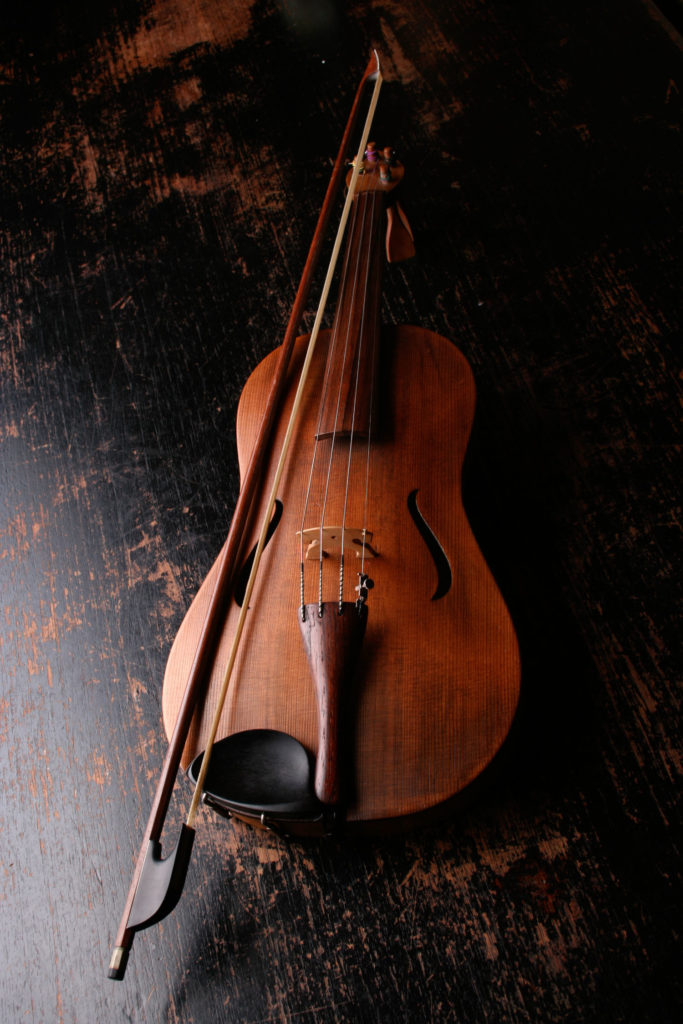
Violin
Pianists must also coordinate their hands with their left foot by operating foot pedals that either soften the sound or allow the strings to continue vibrating after lifting hands off of the keyboard.
The violin is a much more complicated instrument when it comes to sound production. You need to be able to hear the pitch correctly, know what note the pitch is, and know if it is in tune. Then you must be able to transfer what you internally heard to the violin by accurately placing fingers on the strings.
Not only that, but you will need to learn how to apply the bow without it sounding squeaky or scratchy. It can take a lot of practice to produce full, smooth sounds from your violin and improve your tonal quality.
Violins go out of tune much quicker than pianos. You benefit from performing a tuning check each time before you play.
When considering the ease of wrapping your fingers around an instrument to play the notes, know that it is easier on a violin than piano since music students with smaller hands may learn on half-sized three-quarter-sized violins.
Instrument Size
The instrument size not only can make an instrument more or less challenging to play. Larger instruments, like piano, can make it difficult to transport to other locations.
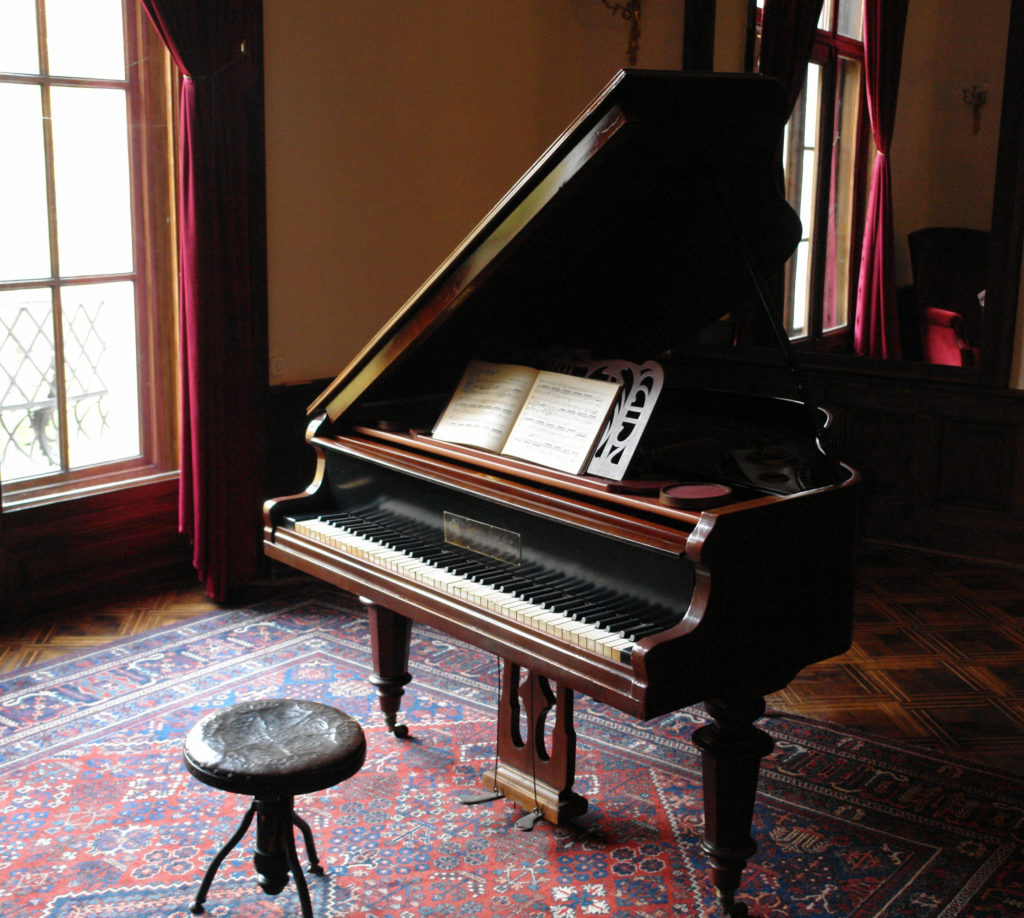
Piano
The piano is a huge instrument that is not easy to transport at all. Professional piano movers are often required to move the piano safely. Depending on whether your piano is a classic upright, a baby grand, a baby grand, or concert grand piano, it can weigh anywhere from 200 lbs to over 1,000 lbs. If you are transporting it yourself, you will need a lot of muscle and moving blankets to protect the piano from getting scratched. Tips for moving a piano include:
- Making sure the piano lid is locked
- Using ramps to load a piano down a stairway
- Using piano-moving shoulder straps for lifting the piano safely
- With an expensive piano, strongly consider using a piano moving company to avoid damaging it, so it stays in tip-top condition during the move.
Violin
With the violin, you can easily carry it to music lessons, orchestra and chamber music rehearsals, recitals, and concerts. You can fit it in a car or airplane without a problem. At 3 – 5 lbs from the violin, bow, accessories, and the case, there can be no complaints if you ask me.
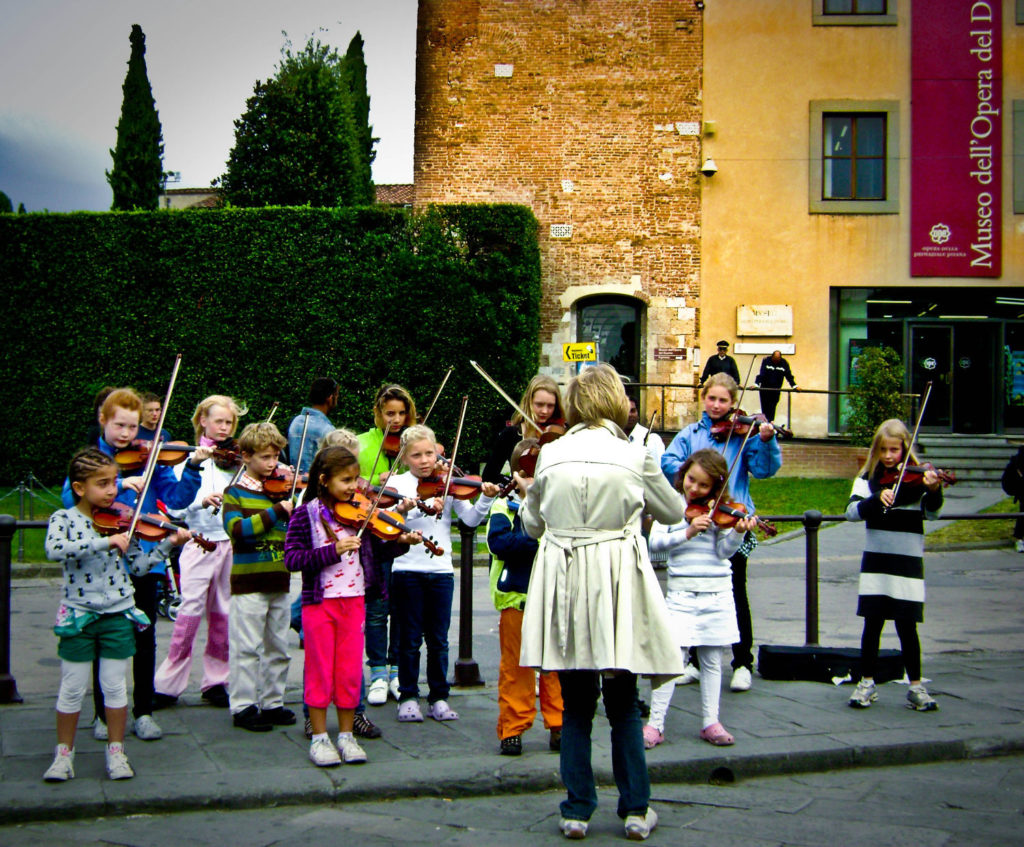
Teaching Methods
When learning a new musical instrument, you may want to choose one that best serves your learning style; music teachers typically teach the piano quite differently than the violin. Music instructors commonly teach piano as a solo instrument. They more usually embed violin pedagogy within a musical community. Some students learn better by auditory, and others by visual or kinesthetic.
Piano
The piano typically is taught one-on-one. In this traditional teaching method, reading sheet music is shown first and becomes like a second language to students. Studying rhythm and proper posture and playing techniques follow closely behind in the learning process.
Music teachers commonly teach piano as a solo instrument. With the violin, students receive the motivational benefits of playing in groups. All teaching methods have pros and cons, depending on a student’s goals, aspirations, and personality type.
Beginning Violinists Often Learn the ‘Suzuki Method’
A popular teaching method for the violin is called the Suzuki method, which relies on sound training. The focus of the Suzuki method is on teaching students to rely on sound first before note-reading using memorization, group lessons, and having students listen to numerous recordings.
The Suzuki Method has a higher focus on technique and posture than in more traditional non-Suzuki violin lessons. Traditional teachers begin with reading sheet music. Non-Suzuki teachers place a higher value on good intonation – the ability to play on-pitch without being sharp or flat – as well as producing a beautiful tone quality.
The Suzuki method is especially helpful in learning to pay attention to details in an encouraging environment. Unlike the piano, Suzuki students are not only required to take individual lessons but also expected to attend group lessons as well. While you might learn how to hold an instrument in your individual lessons, your group lessons may consist of playing music games and reviewing music. Typically there are regular recitals for students to perform, giving them the valuable experience of preparing their music and presenting it to an audience of family, friends, and fellow students.
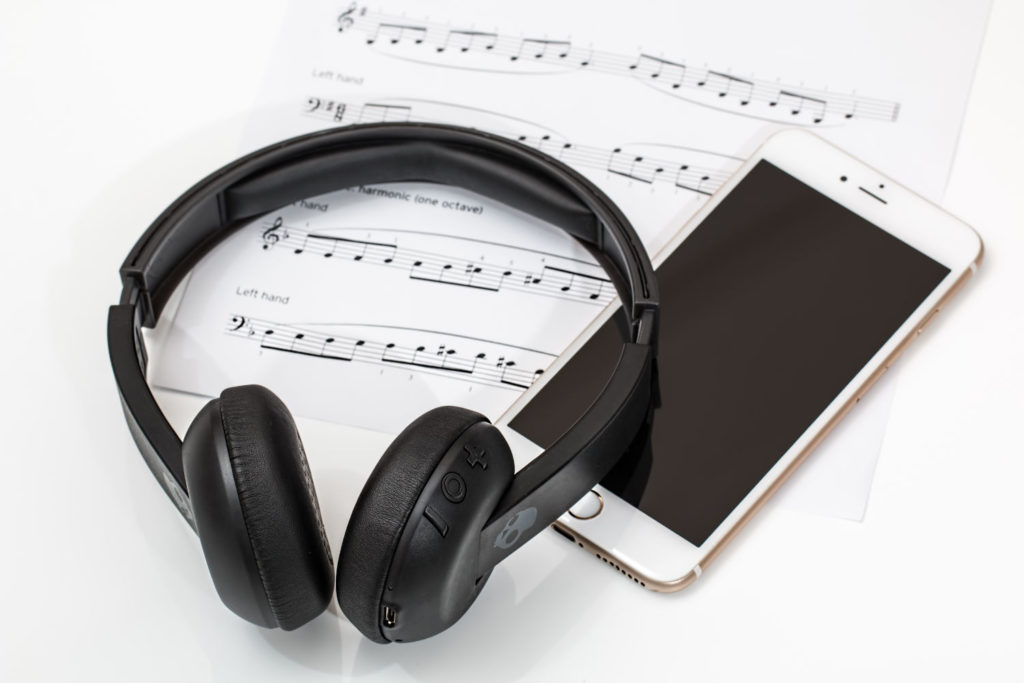
Visual, Auditory and Kinesthetic Learning Styles
It is vital to consider how you or your child best learns if you want to set yourself or your child up for success. This chart below from the Music Teachers National Association Foundation (https://www.mtnafoundation.org/media/58356/Garcia%20Article.pdf), illustrates the types of learning styles that beginning musicians may benefit from knowing.
Susanna Garcia, “Learning Styles and Piano Teaching,” Piano Pedagogy Forum, Vol. 5, No. 1 (January 2002): 89. Used with permission of the Frances Clark Center for Keyboard Pedagogy.
Learning Styles and Characteristics of Music Students
| VISUAL | AUDITORY | KINESTHETIC/TACTILE |
| Good reader. Plays with note accuracy. | Heavy reliance on playing by ear. Might guess at notes rather than figure them out. Frequently changes notes in the piece because they “sound better”. | Plays by feel. Is willing to repeat a pattern over to “get it in the fingers”. May have a difficult time relating to notation presented in a conventional way |
| Dislikes playing by ear. | Often makes up songs or likes to improvise. Enjoys “picking out” songs. | Loves to keep playing the songs that have already been learned. |
| Sometimes demonstrates a lack of sensitivity to the sound quality or to phrasing. Might not be able to sing the melody that was just played. Might hold the pedal down inappropriately. May play mechanically. | Generally expressive player, careful about how it is sounding. | Will play with great enthusiasm. How it feels to play may be more important than how it is actually sounding. May “bang” things out. |
| Has trouble memorizing. | Memorizes well, can fake if necessary. | Memorizes easily, but tactually. |
| Lacks attention to fingering. May have difficulty learning a piece because of lack of consistent fingering | May be more willing to work out different fingerings if the new fingerings affect the quality of the sound. | Once it is in the fingers, is virtually impossible to change. |
| Can focus on details. Prefers to start from the beginning and work to the end, gradually mastering each section. | Likes to get a general sense of the whole piece, often with inaccuracies, before refining. | Likes to get a general sense of the whole piece, often with inaccuracies, before refining. |
| May have awkward technique due to over-reliance on the printed score. Generally unaware of how the body “feels”. | Generally willing to work on technique. | Is generally comfortable at the keyboard. Is willing to work on technique if you are not trying to “unlearn” something. generally very aware of how the body “feels”. |
| Learns best by following written instructions and reading music. Enjoys workbooks, written theory and “drill and practice” software. | Learns best through demonstration and imitation. Tape recording music and instructions may be most effective. Aural application of information is the best for them. | Learns best through demonstration and repetition. Games and movement activities are often necessary for understanding. This student often responds well to a chord approach, where they can “see and feel” the structures on the keyboard. |
Conclusions on Deciding to Learn the Piano or Violin Based on Difficulty
Both the piano and violin are both captivating instruments to learn. Choosing which one to play solely based on an instrument’s difficulty level would be unwise. While the violin is more difficult to learn than piano, it offers the perks of being portable, more practical, and having more of a community.
The piano, on the other hand, allows those who prefer to learn individually to thrive. It also allows those with less ability to hear pitch accurately to excel at playing an instrument. Choose the musical instrument that speaks to you or your child. Perhaps try both the piano and the violin out, and enjoy the journey!
Websites referenced for this article:
https://takelessons.com/blog/is-it-hard-to-play-violin
https://internationalsuzuki.org/method.php
https://www.violinist.com/blog/laurie/20122/13212/
https://www.howviolins.fi/knowledge-base/some-different-methods-for-learning-the-violin/

